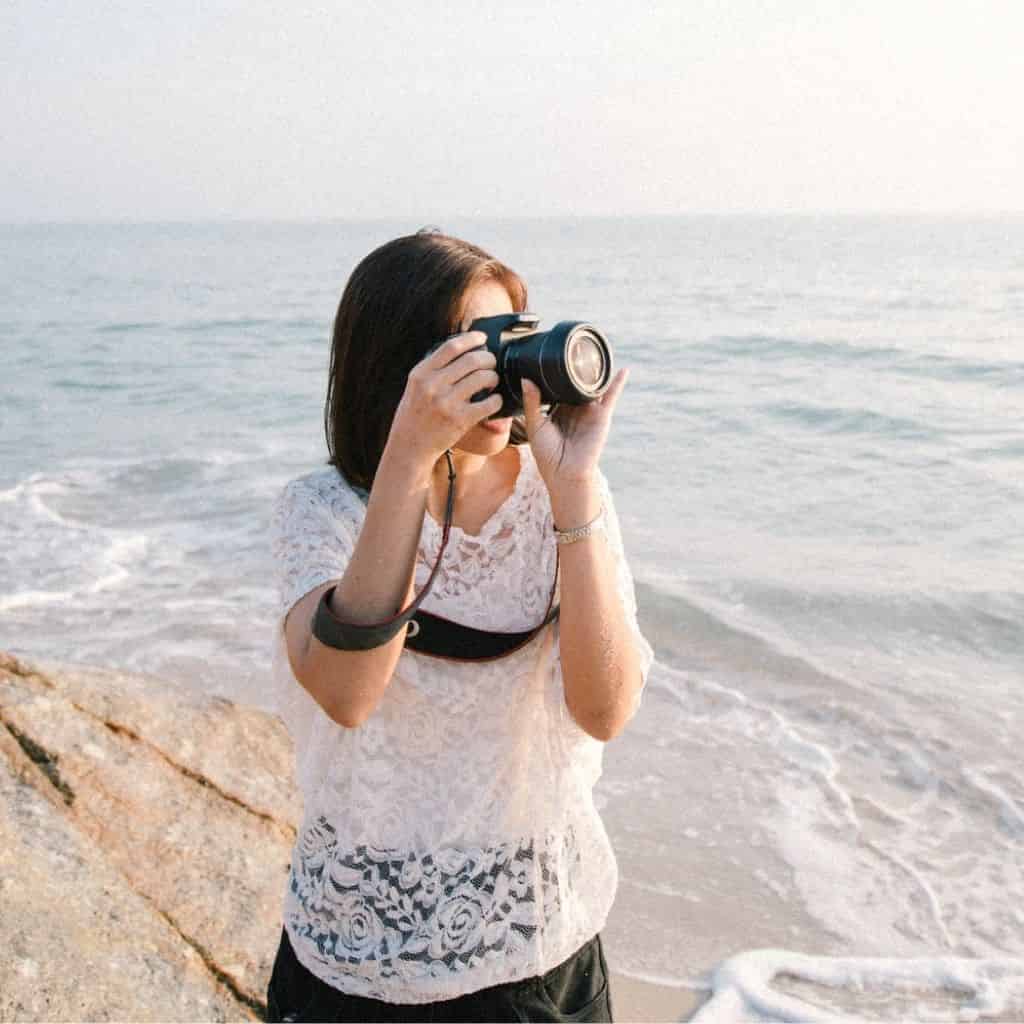In photography, exposure bracketing refers to a technique where you take several shots of the same photo at different exposures.

The purpose of exposure bracketing
Exposure bracketing means taking a photo several times while changing your camera setting for each shot. Normally, you’ll take three photos. One will be underexposed, the second will be with standard exposure, and the last will be overexposed.
Related: How to fix overexposed lighting in Lightroom
Now, why would you want to bracket photos?
From your experience with photography and exposure, you’ve already dealt with difficult lighting.
Sometimes you go home to review the photos, and the exposure is way off. Either it’s too dark or too bright, and you’re not able to recover it.
Exposure bracketing is important because it’s a technique that ensures you’ve captured a photo with the best exposure.
Related: What’s secondary sunset?
Now, when you go home to review the photos, you have multiple variations of the image to choose from. You’ll never feel like you wasted a photo session or didn’t get the perfect shot.
The only downside to exposure bracketing is that you’ll be taking three times the number of photos. This can lead to a full memory card if you aren’t manually deleting the photos that you don’t need as you go.
Related: What’s tungsten light, and how do you use it?
Types of bracketing
Since bracketing means changing a variable while taking a photo of the same scene, there are many types of bracketing. The following are examples of settings you can use for bracketing:
- White balance.
- Focal length.
- Focus.
- Flash exposure bracketing.
How to use it in your photography
If you’re dealing with a difficult lighting situation or struggle with exposure, try exposure bracketing. There are many ways to do it, they’re as follows:
1. Change the shutter speed. Once you’ve set your aperture and ISO, you can alter the shutter speed to change the exposure. Changing the shutter speed is the most popular way to do exposure bracketing.
Take a photo with standard exposure, then slow down the shutter speed for an overexposed photo, and lastly, speed up the shutter speed to take an underexposed photo.
2. Change the ISO. With this method, set the aperture and shutter speed. Then, take a photo with standard exposure, overexposure, and underexposure.
A higher ISO number leads to a brighter photo, while a lower ISO number leads to a darker one. When you increase the ISO, remember that a higher number can create noise, which leads to a grainy image.
3. Change the aperture. After setting your shutter speed and ISO, change the aperture to alter the exposure. Changing the aperture means that you’re changing the f-stop number.
The smaller the number, the larger the area that’s allowing light in, which leads to a brighter photo. It’s also known as a larger aperture. Larger numbers mean smaller apertures or a smaller area for light to enter.
The other consideration is that aperture affects the depth of field. As you change the aperture, you’ll notice that the amount of the photo that’s in sharp focus will change.
4. Use automatic exposure bracketing (AEB). Automatic exposure bracketing is a camera setting that tells your camera to bracket the photo for you, and it’s available in most modern cameras.
When you turn on AEB, you’ll press the shutter release once, and you’ll have the same shot with different exposures. If you want the simplest way to bracket a shot, AEB is the best choice.
Conclusion
Exposure bracketing is one of the best techniques that you can learn in photography. If you aren’t already using, start today. By taking several photos of the same subject and scene with different exposures, you’ll be able to choose the best one.
More resources:
Featured image courtesy of Unsplash.
